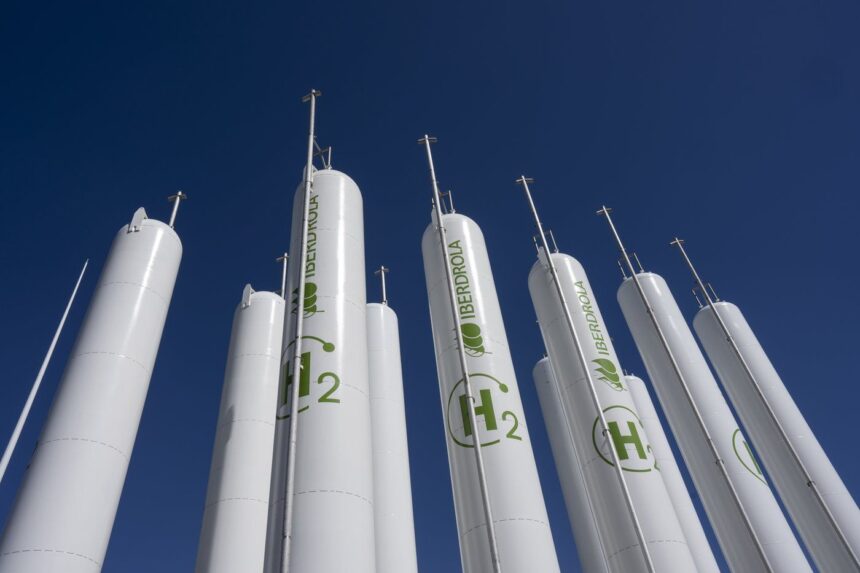I step out of the rental car into St. John’s bracing Atlantic wind, notebook already dampening in my grip. World Energy GH2’s proposed hydrogen production facility should be taking shape along this shoreline—the flagship of Newfoundland and Labrador’s green hydrogen revolution. Instead, I find only the familiar rocky outcrop and fishing boats bobbing in the distance.
“We’ve heard all the promises before,” says Maggie Thornhill, whose family has fished these waters for four generations. “First it was oil, now hydrogen. But the bills are piling up and the jobs haven’t materialized.”
Across Newfoundland, a pattern is emerging that contradicts the province’s ambitious hydrogen strategy. Multiple companies, including industry leader World Energy GH2, have fallen behind on payments to local contractors. According to documents obtained through freedom of information requests, at least three major hydrogen developers owe combined debts exceeding $3.2 million to small businesses across the province.
The province has staked its economic future partly on becoming what Premier Andrew Furey called a “green hydrogen powerhouse” when announcing the provincial hydrogen framework in 2023. The strategy projected 3,000 jobs and billions in investment to harness Newfoundland’s powerful winds to produce hydrogen for export to energy-hungry European markets.
For communities still reeling from the collapse of cod stocks and the volatility of oil prices, hydrogen represented a lifeline. “When they held town halls in Stephenville, you couldn’t find a seat,” recalls David Parsons, who runs a small construction company that was contracted for preliminary site work. “They promised steady work for years to come.”
But eight months after breaking ground, Parsons is still waiting for $178,000 in overdue payments. “I’ve had to let three people go. These are my neighbors, people I see at church on Sunday.”
The Newfoundland and Labrador Environmental Industry Association (NEIA) has tracked similar stories across the province. “We’re seeing a troubling gap between announcements and execution,” explains Kieran Hanley, NEIA’s executive director. “Companies secure permits and provincial support based on projected timelines that appear increasingly unrealistic.”
At the Department of Energy’s St. John’s offices, officials maintain that the industry’s struggles are normal growing pains. “Emerging industries often face early challenges,” says Deputy Minister Elizabeth Whitten. “We remain confident in hydrogen’s potential for Newfoundland and Labrador.”
The province’s hydrogen ambitions rely heavily on wind-to-hydrogen technology. Using electrolyzers powered by wind farms, companies plan to split water molecules to produce “green hydrogen“—a carbon-free fuel that can be compressed, shipped, and used to power everything from vehicles to factories.
Environment and Climate Change Canada has identified green hydrogen as a critical component of the country’s net-zero strategy. A 2024 report from the Canadian Climate Institute estimates hydrogen could contribute up to 27% of Canada’s emissions reductions by 2050.
But hydrogen’s promise remains largely theoretical in Newfoundland. World Energy GH2, which did not respond to multiple interview requests, has delayed key project milestones three times in the past year. According to the provincial registry, the company has also reduced the scope of its planned wind farm by 30%.
The Canadian Hydrogen and Fuel Cell Association acknowledges the industry faces significant hurdles. “Green hydrogen isn’t economically viable yet without substantial subsidies,” explains Mark Ryan, the association’s policy director. “Projects require massive upfront capital with returns potentially decades away.”
That economic reality has created tension in communities like Port au Port, where residents initially welcomed hydrogen projects but now question their viability.
On a rainy Tuesday, I meet with the Port au Port Peninsula Economic Development Committee at the local diner. Steam rises from coffee cups as committee members share their frustrations.
“We’ve lived through boom-and-bust cycles before,” says committee chair Stella Cornect, a retired teacher. “The difference is that previous industries at least got off the ground before they collapsed.”
The committee’s concerns extend beyond economics. Catherine McNeil, a local environmental advocate, points out a thick environmental assessment on the table. “The wind farms needed for these hydrogen projects would be among the largest in North America. We’re talking about hundreds of turbines across pristine wilderness.”
Memorial University environmental economist Dr. Brett Favaro says the industry’s struggles highlight the challenges of energy transitions. “We’re asking rural communities to bear the risks of experimental technologies while the benefits remain speculative,” he explains from his St. John’s office. “It’s not surprising that enthusiasm is waning.”
Not everyone has lost faith. In Corner Brook, I visit Atlantic Hydrogen Inc.’s small but operational demonstration facility. Unlike larger projects, this modestly-scaled operation has paid its bills and maintained community support.
“The key is starting small and proving the concept,” explains operations manager Jennifer Pike as she shows me the facility’s 2-megawatt electrolyzer. “Some companies promised the moon before understanding Newfoundland’s unique challenges—from extreme weather to limited infrastructure.”
Pike believes hydrogen still has a future in the province but cautions against over-promising. “This isn’t a gold rush. It’s a marathon that requires patience and community buy-in.”
That perspective resonates with provincial energy analyst Michael Collins from the Newfoundland and Labrador Independent Energy Research Group. “The hydrogen industry is following a familiar pattern we’ve seen in other resource booms—initial hype, followed by reality checks, then potentially a more sustainable development phase.”
Collins suggests the province needs to recalibrate its approach. “Rather than chasing massive projects primarily benefiting European markets, we should focus on building hydrogen capabilities that serve local needs first.”
As I drive back to St. John’s along the windswept coast, the contrasts are striking. Billboards advertising “Newfoundland’s Hydrogen Future” stand adjacent to shuttered fish processing plants—symbols of previous economic promises that failed to deliver lasting prosperity.
For now, Newfoundlanders like Maggie Thornhill remain cautiously skeptical. “We’ve learned to wait and see,” she tells me as we watch fishing boats return to harbor. “The wind will still be here tomorrow, whether it’s powering hydrogen plants or just pushing our boats back to shore.”






